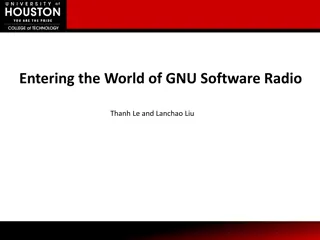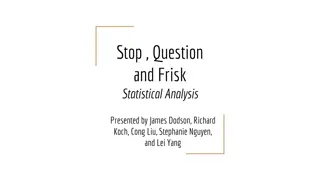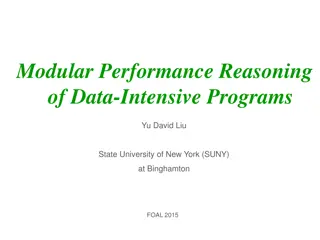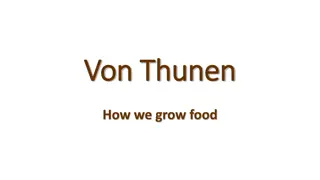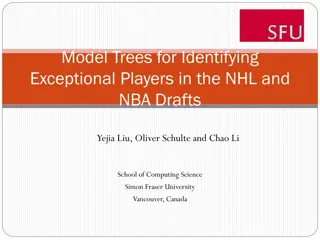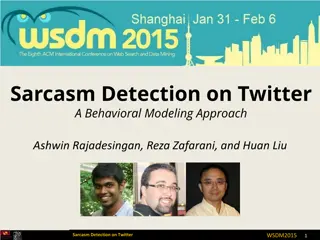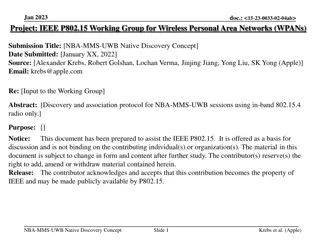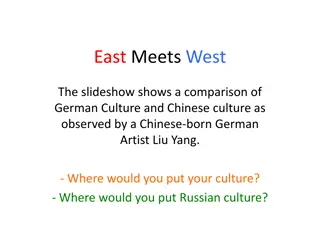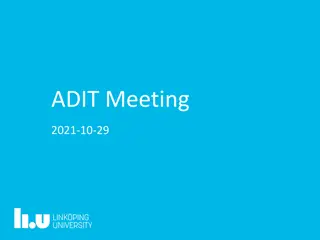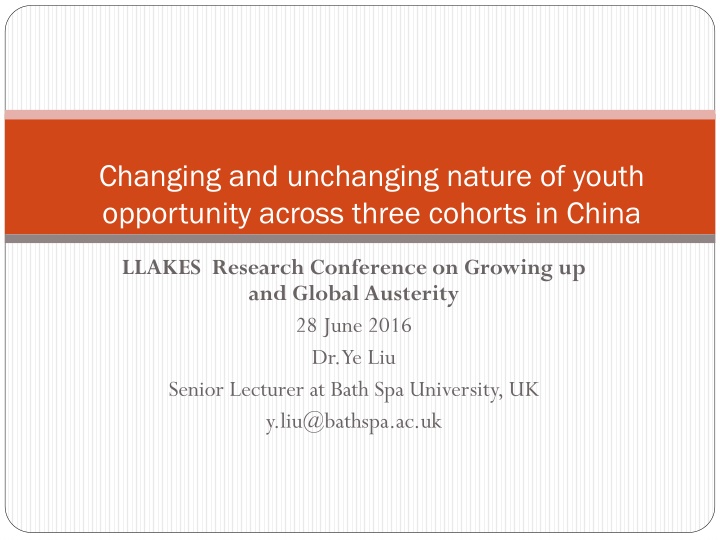
Exploring Changing Youth Opportunities in China's Shifting Economy
Uncover the evolving landscape of youth opportunities in China across three cohorts, delving into the impact of economic trends and societal challenges. Dr. Ye Liu from Bath Spa University presents insights from the LLAKES Research Conference, shedding light on the dynamic nature of opportunity for the new generation of Chinese youth amidst global transformations.
Download Presentation

Please find below an Image/Link to download the presentation.
The content on the website is provided AS IS for your information and personal use only. It may not be sold, licensed, or shared on other websites without obtaining consent from the author. If you encounter any issues during the download, it is possible that the publisher has removed the file from their server.
You are allowed to download the files provided on this website for personal or commercial use, subject to the condition that they are used lawfully. All files are the property of their respective owners.
The content on the website is provided AS IS for your information and personal use only. It may not be sold, licensed, or shared on other websites without obtaining consent from the author.
E N D
Presentation Transcript
Changing and unchanging nature of youth opportunity across three cohorts in China LLAKES Research Conference on Growing up and Global Austerity 28 June 2016 Dr.Ye Liu Senior Lecturer at Bath Spa University, UK y.liu@bathspa.ac.uk
Outline of the Presentation Outline of the Presentation Research rationale Research Background Chinese context Research design and data analysis Main findings Discussion and conclusion
Research Rationale China has arguably played an important role in the gradual eastward shift in the global economy a process which has been accentuated by the financial crisis of 2007/8 and ensuing recession in theWest (Arrighi,2007;Jacques,2012). Yet we have very little empirical knowledge of the circumstances shaping the opportunities of the new generation of youth in China who represent the fastest growing middle class in the world (Hutton,2011).
Research Background Research Background The young generations in China have experienced remarkable new opportunities and also growing challenges. Opportunities: The Reform and Opening-up since 1978 launched China s ambitious modernisation programme; The key to China s transformation-science and technological innovation-high skill labour (Brown et al.,2010) The massive expansion of HE (Marginson, 2016)-The output of science and technology outpaced that of Western countries (Brown et al.,2010;Carnoy et al.,2013); the possibility of professional employment for a larger proportion of youth;
The challenges for Chinese youth challenges for Chinese youth The costs of higher education: the binggui policy shifted the costs to individual students and families (Liu,2013); While China still benefit from high rates of economic growth, there are nevertheless signs of difficulties of young people translating their opportunities into prosperous life styles: Affordable housing (theAnt-tribe) (He and Mai,2015) Quality of employment (Chan,2015) Health insurance (Lu andWang,2013) Pensions (Garcia et al.,2016) Happiness (CGSS, 2003; 2012)
Existing research on youth opportunity elsewhere A global picture of the era of uncertainty and risks for the young people in western industrial societies (UK, US, Japan): Deepening inequality in incomes and wealth (Hills,2010); Diminishing social entitlements, and declining political support (Silva,2013;Willetts,2010); Lost civil identity as the mounting debts and austerity measures are taking the toll (Howker and Malik,2013); Status discord of the transition from university to the labour market as the traditional graduate jobs have been disappearing (Brinton,2010;Kosugi,2008)
The gap of existing research on youth opportunity Most studies focus the economic crisis and the ensuing austerity measures with the problems for the younger generations, for instance, underemployment, broken markers of adulthood (marriage) (Green and Zhu,2010;Silva,2013). We have known that the economic crisis prolonged the youth transition into adulthood (Berlin et al.2010); Yet we have scant knowledge about the role of state in youth transition in adulthood. rising unemployment and
China as a case to examine youth transition Distinctive characteristics 1) State-led development- market transition from a Socialist society characterised with Modernisation, Stability and Harmony ; 2) State intervention in institutional and cultural changes-the Cultural Revolution,the one-child policy (the end); 3) State-sponsored HE universities expansion-the world-class
Existing research on Chinas great transformation and the implications on the opportunity structure 1. Elite opportunity: Walder et al. 2015; Walder et al., 2014a; Walder et al., 2014b; Walder et al., 2013 Main argument: the privileges of the Communist Party elites who seized the opportunities during the market reform and the rise of bureaucratic capitalism. 2. Gender and market transition: Cao and Hu, 2007; Ding et al., 2009;Shu,2005;Hanser,2005 Main argument: Communist empowerment of women and egalitarian gender equality gave way to market reforms which reinforced traditional patriarchal values in Chinese society; declining employment opportunities for women.
3. Education, Meritocracy and social stratification Wu and Zhang, 2015; Wu and Song, 2014; Wu, 2010; Liu,2016 Main argument: the shift from political affiliation to merit-based social selection; expansion of ED opportunities for all social groups but unevenly across different social gradients
Main research questions What are the patterns of youth transition into adulthood overtime in China ? How have the patterns shifted over different socioeconomic and political circumstances? What is the role of the State in youth transitions?
Research design Youth transition into adulthood is marked by life-course events between 25 and 35 including: 1) higher education, 2) the Chinese Communist Party membership, 3) full-time employment, 4) health insurance,5) happiness,and 6) house ownership. Three cohorts. C1: birth cohorts between 1948 and 1963-youth transition affected by the Cultural Revolution C2: birth cohorts between 1967 and 1975-youth transition in parallel with the market transition C3: birth cohorts between 1976 and 1986-youth transition coincident with the HE expansion and China s further integration into the global economy
Data-the Surveys Chinese General Social The Chinese General Social Surveys are the relatively most consistent and reliable large-scale national datasets. C1: birth cohorts between 1948 and 1963 The total number of 1,629 CGSS (2003). C2: birth cohorts between 1967 and 1975 The total number of 2,265 CGSS (2003). C3: birth cohorts between 1976 and 1986 The total number of 1,890 CGSS (2012).
Variables Relationships between social characteristics and life-course events between 25 and 30 across three selected cohorts. Independent variables: 1) gender, 2) father s education, 3) father s Party membership, 4) father s socioeconomic status/occupation. Dependent variables: 1) higher education, 2) the Chinese Communist Party membership, 3) full-time employment, 4) health insurance, 5) happiness and 6) house ownership.
Table 1: Descriptive data of Life-course events in percentage by social characteristics for the Cohort 1 1
Table 2: Descriptive data of Life-course events in percentage by social characteristics for the Cohort 2 (1966-1976) 1
Table 3: Descriptive data of Life-course events in percentage by social characteristics for the Cohort 3 1
Finding 1: Life-course events by gender across three cohorts 1.1 Consistent male advantage over female in higher education opportunities,obtaining party membership and house ownership; 1.2 Male advantage in higher education opportunities declined significantly from the C1 to C3:(ED and meritocracy arguments) 1.3 Male advantage in employment status increased significantly in the C3 (Gender and market transition arguments) 1.4 Little gender differences in health insurance; 1.5 Women felt happier than men in the C1 (the odds of feeling happy for women were 25% higher than men for the C1): (Gender and market transition arguments)
Finding 2:Life-course events between those with graduate fathers and those fathers without a degree across three cohorts 2.1 Evidence of graduate fathers in predicting advantages in the life-course events; 2.2 opportunities and obtaining party membership in the C2; Most significant advantage of higher education
Finding managerial/professional backgrounds and those from working class and agricultural families across three cohorts 3: Life-course events between those from 3.1 managerial/professional working class and agricultural backgrounds in higher education opportunities, obtaining party membership and full-time employment: (education and meritocracy arguments) Consistent advantages families of over those those from from 3.2 the advantage insignificant in health insurance, happiness and house ownership.
Finding 4: Life-course events between those with Party member fathers and those with non-Party member fathers across three cohorts 4.1 Advantages of those whose fathers are Party members than those without Party member fathers consistently strong in all life- course events, including higher education opportunities, obtaining party membership, full-time employment, health insurance, house ownership and happiness (except for the C2). 4.2 Elite opportunity arguments.
Conclusions What has changed over three cohorts? 1. Youth opportunity increases in the participation in higher education whilst there is a significant decline in obtaining full-time employment and house ownership; 2. Women are disadvantaged in all measures of opportunities during the market reform; What remains unchanged? 3. Political capital is most socioeconomic and political circumstances. consistent across shift
Conclusion continued 4.At the theoretical level,we need to include political capital alongside other indicators to social characteristics analyzing youth opportunity in China; 5. At the contextual level, the State is the biggest winner during the market transition. On the one hand, the cost of the massive expansion of HE was shifted to individual families. On the other, the meritocratic ideology of social mobility through HE masked the uneven redistribution of economic, political, and social resources among different social groups during the transition. in
References Arrighi G. (2007) Adam Smith in Beijing: Lineages of the Twenty-First Century. Verso. Berlin, G., Frank, F. Furstenberg, Jr., and Waters, M. C. (2010) Transition to adulthood. The Future of Children 20 (1): 3 18. Brinton, M. (2011) Lost in Transition: Youth, Education and Work in Post- industrial Japan. Cambridge: Cambridge University Press. Brown, P., Lauder, H. and Ashton, D. (2010)The Global Auction: The Broken Promises of Education, Jobs and Rewards. New York: Oxford University Press. Cao, Y. and Hu, C. H. (2007) Gender and Job Mobility in Postsocialist China: A Longitudinal Study of Job Changes in Six Coastal Cities. Social Forces, 85 (4): 1535-60. Chinese General Social Survey (2003, 2012) Chinese General Social Survey-the National Survey Research Center. Bejing: Renmin University. Available from: http://www.chinagss.org/index.php?r=index/researcher
Continued Carnoy, M., Loyalka, P., Dobryakova, M., Dossani, R., Froumin, I., Kuhns, K., Tilak, J. B. G., and Wang, R. (2013) University Expansion in a Changing Global Economy: Triumph of the BRICs? Palo Alto, CA: Stanford University Press. Chan, W. K. (2015) Higher Education and Graduate Employment in China . High Education Policy, 28 (1): 35-53. Ding, S., Dong X. Y. and Li, S. (2009) Women's Employment and Family Income Inequality during China's Economic Transition. Feminist Economics, 15(3): 163-190. Garcia, B. C., Hood, J. and Kadet, P. (2016) (eds) Handbook of Welfare in China. Sydney: Edward Elgar Publishing Ltd. Green, F. and Zhu, Y. (2010) Overqualification, job dissatisfaction, and increasing dispersion in the returns to graduate education . Oxford Economic Papers, 62(4): 740-763. Hanser, A. (2005) The Gendered Rice Bowl: The Sexual Politics of Service Work in Urban China. Gender and Society, 19 (5):581-600. He, Y. and Mai, Y. H. (2015) Higher Education Expansion in China and the Ant Tribe Problem . High Education Policy, 28 (3): 333-352.
Continued Hills, J. (2010) An anatomy of economic inequality in the UK: Report of the National Equality Panel. London: Government Equalities Office. Howker, E. and Malik, S. (2010) Jilted Generation: how Britain has bankrupted its youth. London: Icon Books. Hutton, W. (2011) Them and Us. Changing Britain Why We Need a Fair Society. London: Little, Brown. Jacques, M. (2012). When China Rules the World: The End of the Western World and the Birth of a New Global Order. Penguin: London. Kosugi, R. (2008) Escape from Work: Freelancing Youth and the Challenge to Corporate Japan. Melbourne: Trans Pacific Press. Liu, Y. (2016) Higher Education, Meritocracy and Inequality in China. Singapore: Springer. Liu, Y. (2013) Meritocracy and the Gaokao: A survey study of higher education selection and socioeconomic participation in Anhui and Zhejiang. British Journal of Sociology of Education, 34 (5-6): 868-887.
Continued.. Marginson S (2016) High Participation Systems of Higher Education. The Journal of Higher Education 87(2): 243-271. Shu, X. L. (2005) Market Transition and Gender Segregation in Urban China. Social Science Quarterly, 86:1300-1323. Silva, J. M. (2013) Coming up Short: working class adulthood in an age of uncertainty. Oxford: Oxford University Press. Walder, A. G., Isaacson, A., Lu, Q. (2015). After State Socialism: The Political Origins of Transitional Recessions. American Sociological Review, 80 (2), 444-468. Walder, A. G. (2014a) China s Bureaucratic Capitalism: Creating the Corporate Steel Sector. In K. E. Br dsgaard (ed.), Globalization and Public Sector Reform in China (pp.159-176). London: Routledge. Walder, A. G (2014 b). Elite Opportunity in Transitions from State Socialism. In D. B. Grusky (ed.), Social Stratification: Class, Race and Gender in Sociological Perspective (pp.1110-1115). CO: Westview.
Continued Walder, A. G., Luo, T., and Wang, D (2013) Social stratification in transitional economies: property rights and the structure of markets. Theory and Society, 42 (6): 561-588. Willetts, D. (2010) The Pinch: how the baby boomers took their children s future-and why they should give it back. London: Atlantic Books. Wu, X. G. (2010). Economic Transition, School Expansion and Educational Inequality in China, 1990-2000. Research in Social Stratification and Mobility, 28(1), 91-108. Wu, X. G. and Zhang, Z. (2015) Population Migration and Children's School Enrollments in China, 1990 2005. Social Science Research, 53: 177-190. Wu, X. G. and Song, S. (2014) Ethnic Stratification amid China s Economic Transition: Evidence from the Xinjiang Uyghur Autonomous Region. Social Science Research, 44, 158-172.

